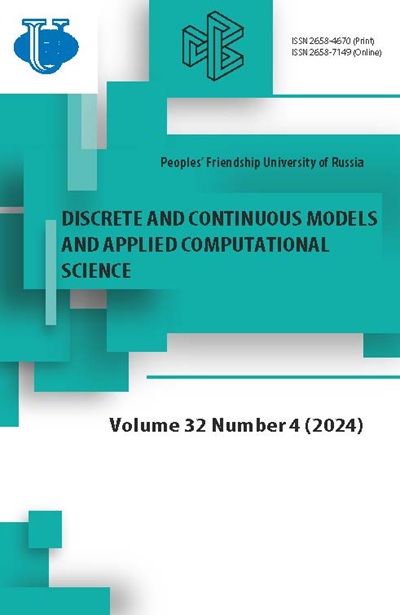Об авторах
Российский университет дружбы народов; Федеральный исследовательский центр «Информатика и управление» Российской академии наук
Email: kiselev@isa.ru
ORCID iD: 0000-0001-9231-8662
Scopus Author ID: 57195683637
ResearcherId: Y-6971-2018
Candidate of Technical Sciences, Senior Lecturer at the Department of Mathematical Modeling and Artificial Intelligence of RUDN University; Researcher of Federal Research Center “Computer Science and Control” of the Russian Academy of Sciences
ул. Миклухо-Маклая, д. 6, Москва, 117198, Российская Федерация; ул. Вавилова, д. 44, корп. 2, Москва, 119333, Российская Федерация
Российский университет дружбы народов
Email: gorbunova_y_m@mail.ru
ORCID iD: 0000-0001-6280-6040
Master’s degree student of Department of Mathematical Modeling and Artificial Intelligence
ул. Миклухо-Маклая, д. 6, Москва, 117198, Российская Федерация
Российский университет дружбы народов; Федеральный исследовательский центр «Информатика и управление» Российской академии наук
Автор, ответственный за переписку.
Email: veicenfeld@isa.ru
ORCID iD: 0000-0002-2787-0714
Master’s degree student of Department of Mechanics and Control Processes
ул. Миклухо-Маклая, д. 6, Москва, 117198, Российская Федерация; ул. Вавилова, д. 44, корп. 2, Москва, 119333, Российская Федерация
















